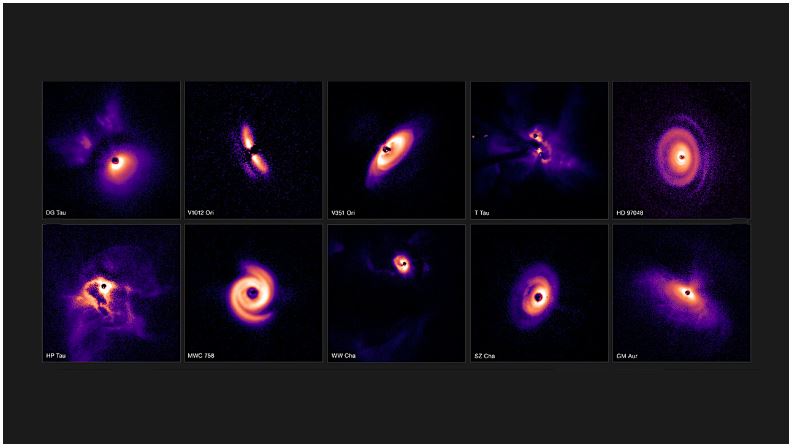
in One of the largest surveys ever conducted For planet-forming disks, a team of astronomers from more than a dozen countries studied more than 80 young stars in our Milky Way Galaxy, which may have planets forming around them, in order to shed light on the fascinating and complex process of planet formation.
Pioneering research sheds light on the mysteries of the birth of planets around stars
Through stunning images taken with the European Southern Observatory's (ESO) Very Large Telescope (VLT) in Chile, researchers studied a total of 86 stars in three different star-producing regions of the Milky Way: Taurus and Chameleon I, both around 600 years apart. light from Earth, and Orion, a gas-rich cloud about 1,600 light-years away that is known to be the cradle of many stars more massive than the Sun.
5,000 planets orbit stars other than the Sun
To monitor the disks, the team used the advanced SPHERE instrument on board the VLT, which provides clear images of the disks. Thus, the team was able to image disks around stars with only half the mass of the Sun, which are typically too faint for most other instruments available today. Additional data was obtained using the VLT's X-shooter, which allowed astronomers to determine how old and massive the stars are. In addition, the ALMA radio telescope array in the Atacama Desert helped the team understand more about the amount of dust surrounding some stars.
To date, more than 5,000 planets have been discovered orbiting stars other than the Sun, often in systems significantly different from our own solar system. To understand where and how this diversity arises, astronomers must observe the dust- and gas-rich disks surrounding young stars, the cradle of planetary formation.
New images highlight this extraordinary diversity of planet-forming disks. The team was able to extract several key insights from the data set. For example, in Orion, they found that stars in clusters of two or more stars were less likely to have large planet-forming disks.
This data will help researchers uncover the secrets of planetary formation. The three research papers are published in the journal Astronomy and Astrophysics.

“Avid problem solver. Extreme social media junkie. Beer buff. Coffee guru. Internet geek. Travel ninja.”





More Stories
In Greece Porsche 911 50th Anniversary – How much does it cost?
PS Plus: With a free Harry Potter game, the new season begins on the service
Sony set to unveil PS5 Pro before holiday season – Playstation